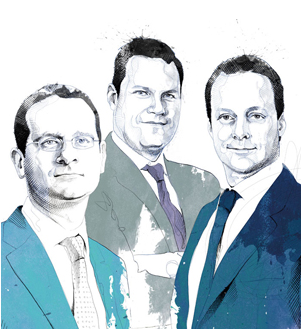Over the last few months we have been raising the quality of high yield bonds in the portfolio. At this stage in the credit cycle it seems sensible to avoid undue risk while at the same time acknowledging that unconventional monetary policy is elongating the cycle. While we do not see an imminent risk of defaults, we believe an early upgrade will prove rewarding and have been reducing our weight in CCC in favour of BB rated bonds.
What has prompted the rise in quality?
- Energy sector: Deutsche Bank estimate that a third of US single B and CCC energy high yield bonds are at risk of restructuring or default if the current low oil price persists for a few quarters. While we see the energy sector as a special case, it is likely to have a knock-on effect on sentiment towards lower rated bonds as pressures among energy borrowers cause US default statistics to deteriorate.
- Liquidity: Banks have stepped back somewhat from their traditional role as market makers. This role is a victim of well-intended regulation having the opposite desired effect as stricter requirements on bank capital and trader remuneration has led to a reduction in banks’ willingness to take risk onto their own books. We need to be mindful that liquid assets can become illiquid if everyone trades in the same direction. Premiums will be paid for better quality assets so it makes sense to own them early.
- US monetary policy: The US Federal Reserve (Fed) is preparing the way for an interest rate rise. In March, the Fed scrapped its pledge to be “patient” before lifting rates, although this was tempered by rate projections being pushed out. The Fed has been good at providing guidance but we are wary of complacency. Rewind back to summer 2013 and investors may recall the taper tantrum when bonds sold off on suggestions the Fed would taper its asset purchasing program. Tightening still has the capacity to shock!
Recent weakness in some of the US economic data means expectations of a rate rise have drifted out somewhat, but we want to own the better quality bonds before investor concerns rise. A rise in interest rates in the US is likely to lead to tighter credit standards at banks and this may make it harder for some companies to refinance. There has been a close relationship historically between tightening credit standards and the default rate as shown in the chart below.
Regional differences
The shift in credit quality improvement within the portfolio is primarily among US bonds because the credit cycle in Europe is younger and the monetary policy background is different. They say “don’t fight the Fed” but we don’t want to fight the European Central Bank (ECB) either.
The ECB’s quantitative easing (asset purchases) is pushing down yields on sovereign bonds, such that €1.7 trillion of Eurozone bonds were negative yielding in mid-April. This figure is several times larger than the entire euro high yield market, as shown in the chart below. With ECB quantitative easing set to remain in place until September 2016 this creates strong technical support for European high yield bonds. This is because a cascade effect takes place with investors moving down the credit spectrum in search of a positive yield, supporting our overweight position to the region.
Kevin Loome is Head of US Credit at Henderson Global Investors.






 For Fórmate a Fondo
For Fórmate a Fondo